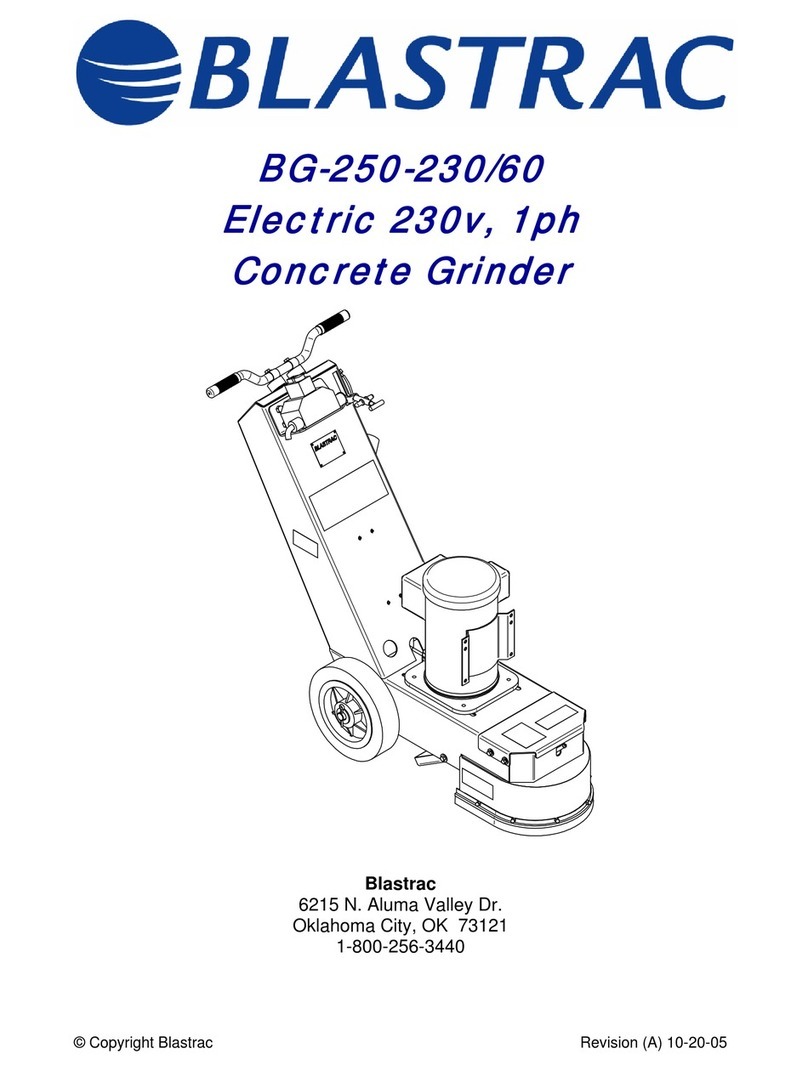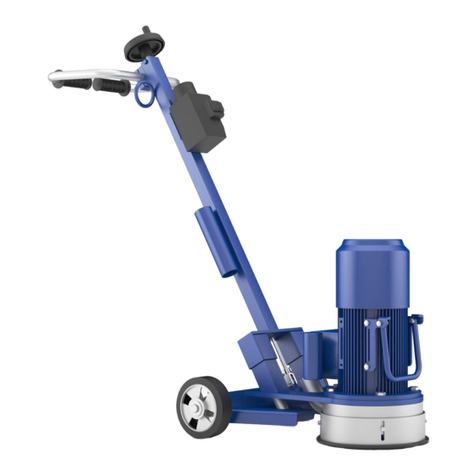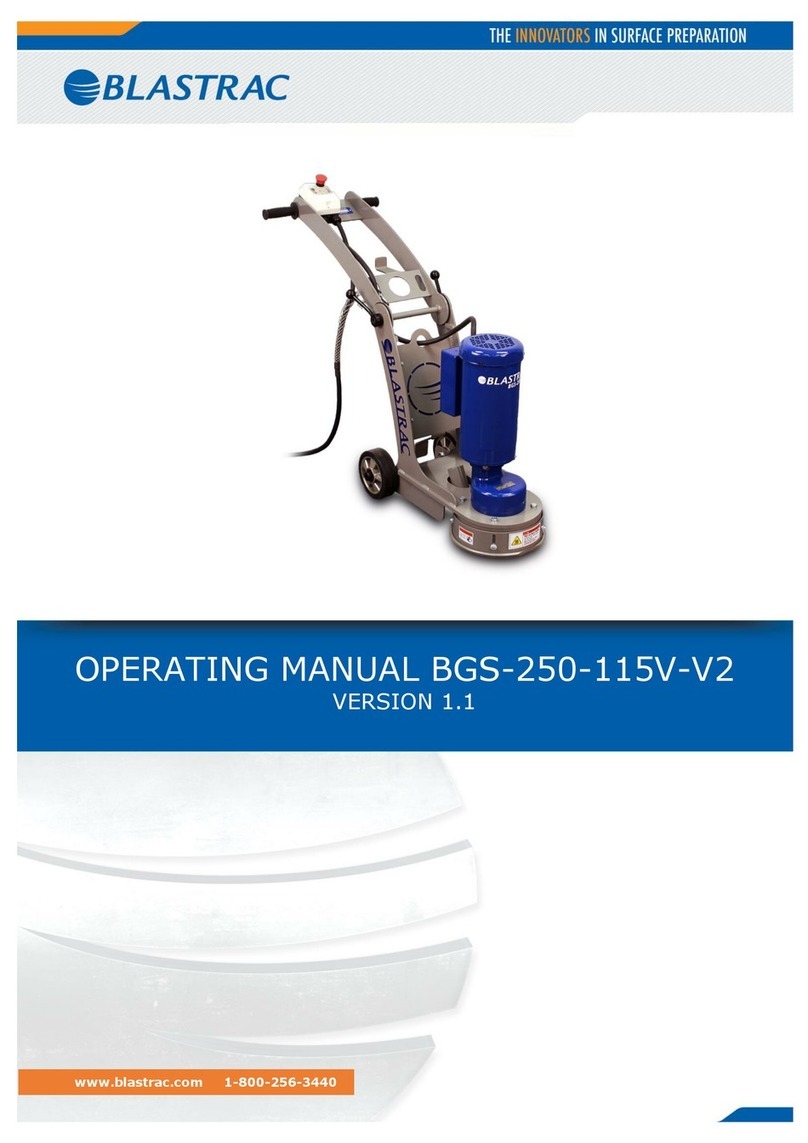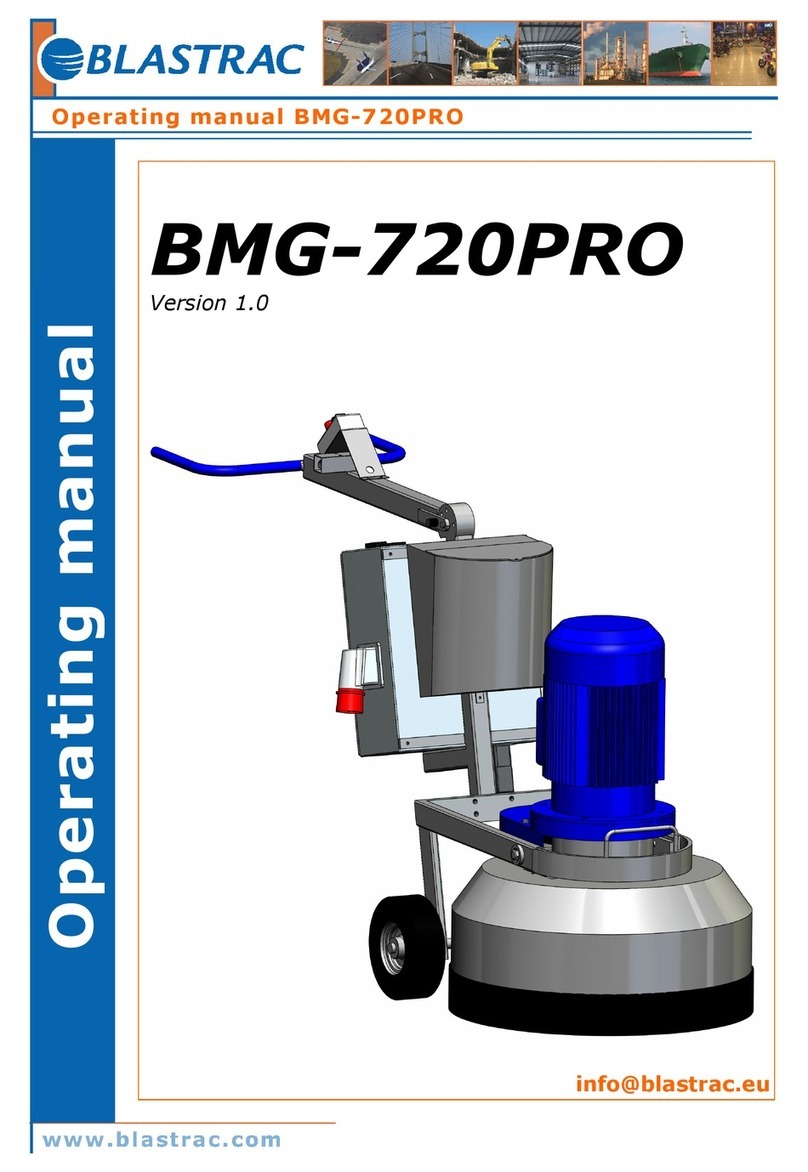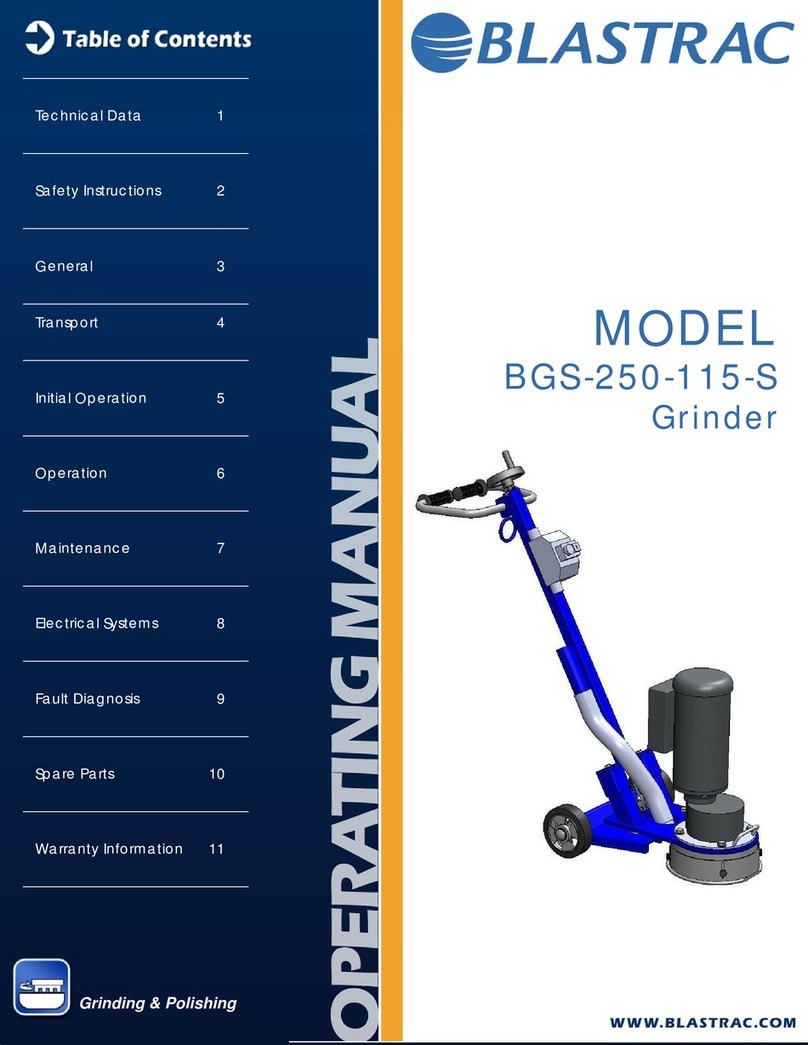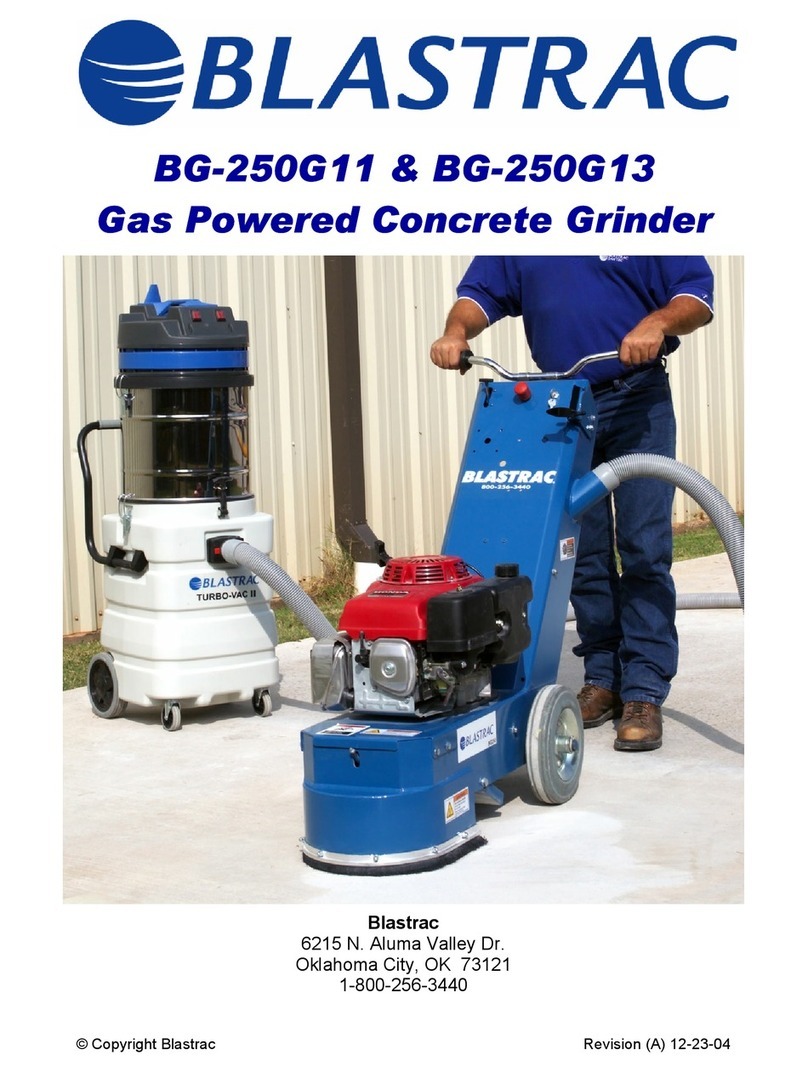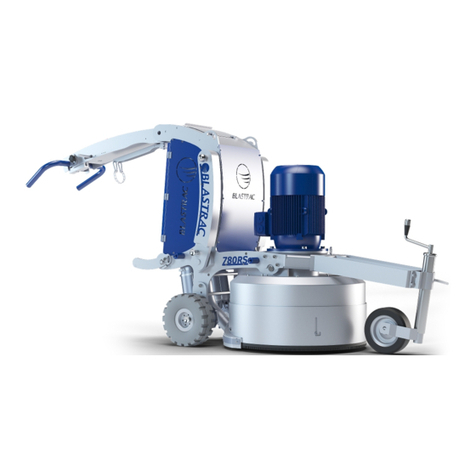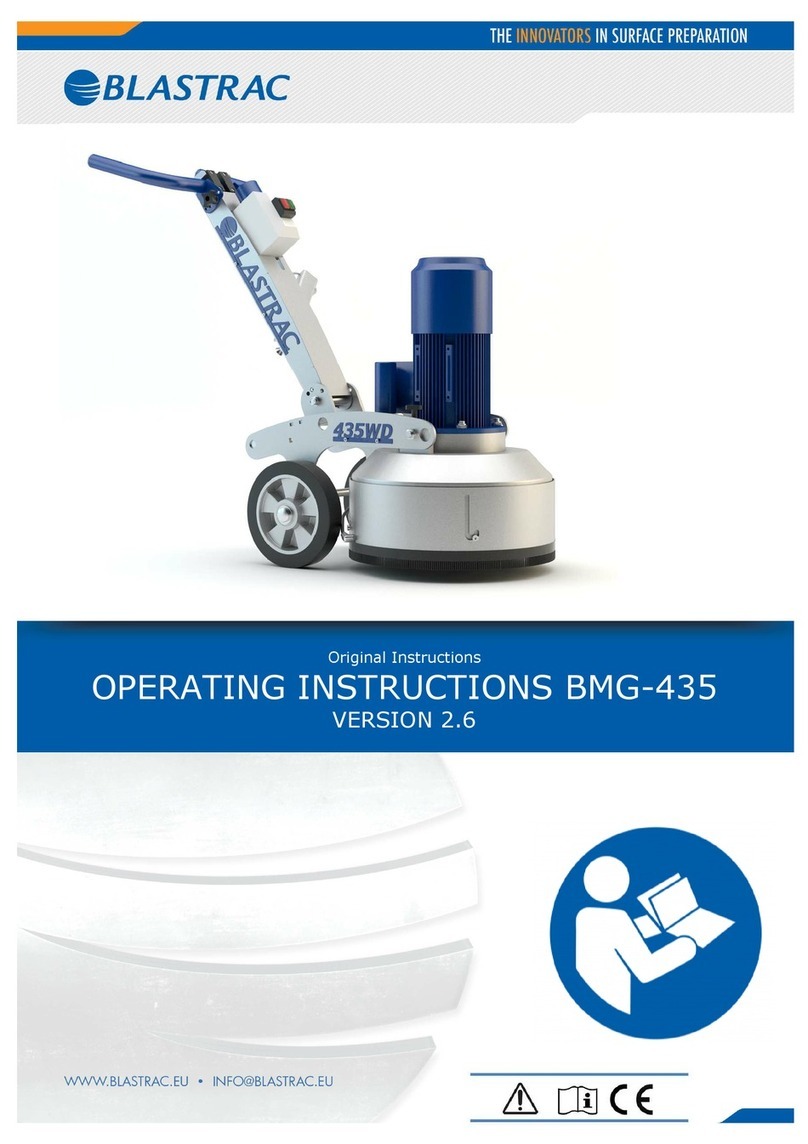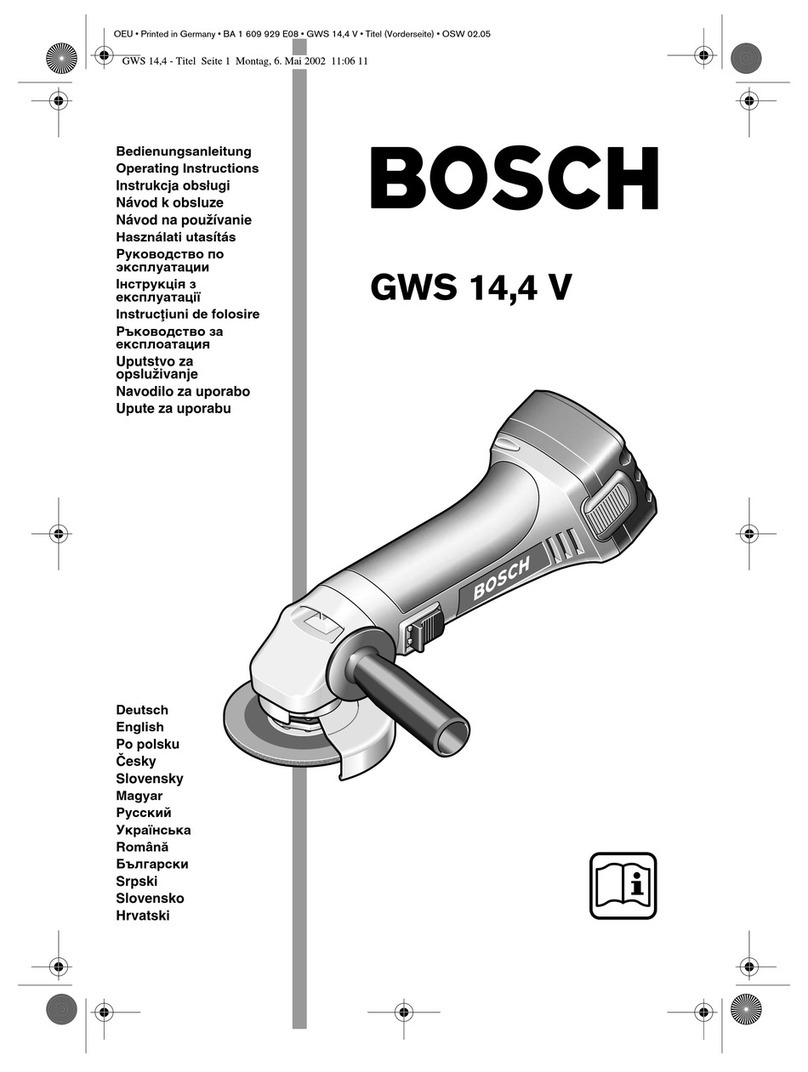
3.5 Maintenance safety
a) Pull out the main plug and place it in sight, before starting inspections and repairing on the machine. Pull
out the key of the dead man’s switch and keep it in your pocket. Press the Emergency shutdown button.
b) Wait for standstill of all drives before any inspections, adjustments and/or maintenance work is started.
c) Block the machine in a stable position before doing any maintenance work.
d) Failures due to inadequate or incorrect maintenance may generate very high repair costs and long
standstill periods of the machine. Regular maintenance therefore is imperative.
e) Operational safety and service life of the machine depends, among other things, on proper maintenance.
f) Prevent premature wear by keeping the machine as dust free as possible. Clean the machine for this
reason regularly with a dust collector and non-aggressive materials, especially the upper drive. Never use
a high pressure water cleaner to clean the machine.
g) It is advisable to stock all spare parts or wear parts that cannot be supplied quickly. As a rule, production
standstill periods are more expensive than the cost for the corresponding spare part.
h) Do not use any aggressive cleaning materials and use lint-free cleaning cloths.
i) To allow the user to carry out maintenance operations, the machine must be disassembled, cleaned and
inspected as far as reasonably possible, without causing hazards for the maintenance staff or other
people.
j) The suitable precautions include decontamination before disassembling the machine, adequate filtered
ventilation of the exhaust air from the room in which it is disassembled, cleaning of the maintenance area
and suitable personal protection equipment.
3.6 Dust collectors safety
a) Always use a suitable Blastrac dust collector when working dry to ensure a dust-free operation of the
machine and clean air at the workspace. Also the airflow helps to cool the machine and prevents
overheating.
b) Read the operating instructions of the dust collector before using it.
c) The dust container/bag of the dust collector must be emptied or replaced regularly. Comply with the local
waste treatment regulations considering the removed material.
d) The dust hose must be connected properly with a hose clamp and industrial tape.
e) The dust hose must be undamaged and free of obstructions.
f) Always switch on the dust collector first!
3.7 Grinding safety
a) The machine contains rotating parts, which are protected with a sliding cover. Always leave the diamond
discs on the floor while the motor is turning.
b) The flexible couplings / buffers can become worn out with use, because of this there can be higher
vibrations than normal. Check for this reason the flexible couplings / buffers for deformation and damage
before every use.
c) Do not let the machine rest on the diamond disc or coupling when it is not in use, this will cause
deformation to the flexible coupling.
d) Make sure the brush seals are in good condition, this to avoid dust escaping.
e) Make sure the diamond tools (wings / discs / pads) are not damaged or worn out.
f) Always pull out the main plug before u start changing the wings, disks or pads.
g) When mounting or removing a diamond disc; lay the machine down backwards so it is lying on the
handle. Make sure the machine will not fall back down. A second person can hold the handle down to
make sure it will not fall back down.
h) For changing the disks/wings u should wear Personal Protective Equipment like a dust mask, safety
goggles, gloves, protective shoes, and close fitting protective clothing.
Use the vacuum cleaner to prevent excessive dust.
i) Caution! The grinding disks / wings will heat up during grinding, don’t risk getting burned, always wear
protective gloves when handling them.
j) The machine contains rotating parts; because of this never tilt the machine backwards with a turning
motor.
k) Be careful with the machine and pull or let down the machine slowly, big shocks can damage the
electrical parts.
l) Make sure the floating shroud is in transport mode when you transport the machine.
